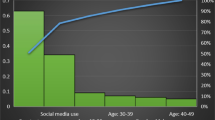Abstract
This paper explores the problem of the current global financial crisis, using a behavioral perspective. Particularly, the main objective of this paper is to test whether overconfidence bias can explain excessive volatility witnessed during global financial crisis in developed and emerging equity markets. Empirical results of EGARCH estimated models show an asymmetric effect of volatility for all equity market indexes. The relation between excessive trading volume of overconfident investors and excessive prices volatility is then estimated. The results indicate that conditional volatility is positively related to trading volume caused by overconfidence bias. This finding provides strong statistical support to the presence of overconfidence bias among investors in developed and emerging stocks markets. This cognitive bias contributes to the exceptional financial instability that erupted in 2008. However, during the subprime financial crisis period overconfidence bias cannot explain volatility because of the loss of confidence by investors in financial markets.




Similar content being viewed by others
References
Abdelhédi ZM, Boujelbène-Abbes M, Boujelbène Y (2011) Subprime crisis and volatility spillover. Int J Monet Econ Financ 4:1–20
Ackermann J (2008) The subprime crisis and its consequences. J Financial Stab 4:329–337
Albulescu CT (2008) The Impact of the New Financial Products on the Volatility of the Economic Growth. J Appl Econ Sci 2:12–19
Anders CJ (2010) Financial markets in East Asia and Europe during the global financial crisis. In: Working Paper Stockholm School of Economics
Avgouleas E (2008) Financial regulation, behavior Finance, and the financial credit crisis in search of a new regulatory model. In: Working paper, http://papers.ssrn.com. Accessed 20 Nov 2008. Bachellier L 1900
Benos AV (1998) Aggressiveness and survival of overconfident traders. J Financial Mark 1:353–383
Berger AN, Bouwman CHS (2008) Financial crises and bank liquidity creation. http://ssrn.com
Black F (1976) Studies of stock price volatility changes. In: Proceedings of the American Statistical Association, Business and Economic Statistics Section, pp 177–181
Chuang W, Lee BS (2006) An empirical evaluation of the overconfidence hypothesis. J Banking Financ 30:2489–2511
Chukwuogor C (2008) Stock Markets Returns and Volatilities: A Global Comparison. Int Res J Financ Econ 15:1–24
Claude B. Erb, Campbell RH, Viskanta TE (1998) Risk in emerging markets, contagion and other factors must be taken into account. In: The financial survey July–August, pp 42–46
Daniel K, Hirshleifer D, Subrahmanyam A (1998) Investor psychology and security market under and overreactions. J Financ 53:1839–1886
Gervais S, Odean T (2001) Learning to be overconfident. Rev Financial Stud 14:1–27
Kausik C, Franc K (2001) Have East Asian stock markets calmed down? Evidence from a regime-switching model working paper, mimeo, University of Amsterdam, Amsterdam
Lamoureux CG, Lastrapes WD (1990) Heteroskedasticity in stock return data: volume versus GARCH effects. J Financ 45:221–229
León Á, Rubio G, Serna G (2004) Autoregressive conditional volatility, skewness and kurtosis WP-AD 2004-13, Instituto Valenciano de Investigacines Economicas
Nelson DB (1991) Conditional heteroskedasticity in asset returns: a new approach. Econometrica 59:347–370
Odean T (1998) Volume, volatility, price, and profit when all traders are above average. J Financ 53:1887–1934
Richard JR (2009) Too much right can make a wrong: setting the stage for the financial crisis FBR of Chicago Working Paper, No. 2009-18
Schwert GW (1989) Why does stock market volatility change over time? J Financ 44:1115–1153
Shefrin H (2009) How psychological pitfalls generated the global financial crisis voices of wisdom: understanding the global financial crisis
Söhnke MB, Gordon MB (2009) No place to hide: the global crisis in equity markets in 2008/09. J Int Money Financ (in press)
Yates JF, Lee JW, Shinotsuka H, Patalano AL, Sieck WR (1998) Cross-cultural variations in probability judgment accuracy: beyond general knowledge overconfidence? Organ Behav Hum Decis Process 74:89–117
Author information
Authors and Affiliations
Corresponding author
About this article
Cite this article
Abbes, M.B. Does Overconfidence Bias Explain Volatility During the Global Financial Crisis?. Transit Stud Rev 19, 291–312 (2013). https://doi.org/10.1007/s11300-012-0234-6
Received:
Accepted:
Published:
Issue Date:
DOI: https://doi.org/10.1007/s11300-012-0234-6






